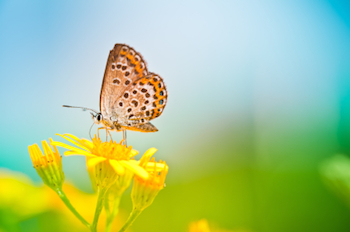In today’s world, natural is a very popular concept. We want “natural” in just about everything we do.
When it comes to carpeting, going natural is something you can easily do with the technology and offerings available to you. Give these options a try.
Wool Carpet
Wool is the most common natural fiber you’ll find in today’s carpeting. Its used frequently in both carpets and in rugs, and with good reason. Wool is strong, resistant to stains, resistant to piling, resistant to fire, and has a coating that causes small amounts of water to bead up, making it easy to clean up immediate spills. It also has natural heat and sound insulation, which can be a good thing on those cold, winter evenings.
Despite the fact that wool does have natural tendencies to reflect small amounts of water, large amounts can quickly overwhelm. Wool carpeting should be installed in dry areas and should not be subjected to large amounts of water (such as in a bathroom, or near doors where it may receive moisture from the elements on a regular basis). Wool is susceptible to both mold and mildew if subjected to water for any length of time. If this is the case, wool carpeting is sometimes blended with hemp fibers to create a stronger resistance to both.
Sisal Carpet
Sisal is a soft, durable natural fiber that is relatively easy to dye and can stand up to high traffic areas without being uncomfortable underfoot. It comes in a variety of colors and patterns, and can be installed in any room in the house. However, because it is easily dyed, it also is easily stained and requires treatments to make it resistant to spills and stains.
Seagrass Carpet
Seagrass is a smooth anti static carpet choice made from natural plant fibers. Its produced from a crop that is grown like rice in paddy fields that are flooded with seawater each year during the growing season.
The tough fibers are nearly watertight, which means it resists stains, dirt and even discoloration. Which also means that it won’t hold dye from a manufacturer, so it is only available in it natural hue. It can be easily damaged if subjected to large amounts of water, or exposed to excessive humidity or moisture, so bathroom and kitchen installation should be avoided.
Coir Carpet
Coir carpeting is manufactured from the husks of coconuts. It is a coarse material that has a naturally rustic look, and therefore is often found in cottages or log cabin settings. Because it has a coarse, almost abrasive texture, it is best kept in high traffic areas, such as hallways and living rooms. Avoid areas where you want soft carpeting under foot, such as in bedrooms and children’s play areas.
While coir is durable, it is susceptible to stains and can discolor from spills. It should be kept away from wet environments.
Jute Carpet
Jute is manufactured from a plant in Asia. The plant is soaked in water, its stalks stripped to make the individual fibers. It is most commonly used in both rope, and in carpet backing material.
Jute is soft and one of the least expensive natural carpet fibers available on the market. But it does lack in durability, making it not such a good choice in areas with a lot of foot traffic.

For all of your Denver Hardwood Flooring needs visit our site today.